
AUSTRALIAN WAR CORRESPONDENT.
Captain: Charles Edwin Woodrow BEAN.
Born: 18 November 1879. Bathurst, New South Wales, Australia. Birth Cert:9656/1879.
Married: 24 January 1921. St Andrew's Cathedral, Sydney, New South Wales, Australia. Marriage Cert:406/1921.
Wife: Ethel Clara Bean. nee: Young. (1894-02/07/1991)
Died: 30th August 1968. Concord Repatriation General Hospital, New South Wales, New South Wales, Australia. Death Cert:28579/1968.
Father: Reverend Edwin Bean. (1851-19/08/1922) Died in 81 High Street, Sandy Bay, Tasmania.
Mother: Lucy Madeline Bean. nee: Butler. (1852-18/03/1942) Died in Hobart, Tasmania.
For two years the Beans spent summer in Oxford and winter in Brussels, where Charles learned French and drawing. In 1891 his father became headmaster of Brentwood School in Essex, which his own father had attended. Charles was a pupil there in 1891-94 and then entered Clifton. He was a schoolboy in love with England and Empire. In its thirty years Clifton had become rich in Imperial tradition. Such old boys as Douglas Haig and William Birdwood were serving in the Bengal Lancers and the Egyptian Army; and while Bean was at school another old boy, Henry Newbolt, published the verses in which the cry 'Play up! play up! and play the game!', learned on the school cricket field, saves the day on the field of battle. Bean acquired at Clifton, he recalled, 'a real interest in literature, & in the classics', and played much cricket. He was known at first as 'The Rum 'Un' for his Australian accent; in his last year he was made head of his house.
In 1898 Bean won a scholarship to Hertford College, Oxford (B.A., 1902; B.C.L., 1904; M.A., 1905), where he read classics (preferring history to philosophy) and simplified his prose style, having 'determined never, if possible, to write a sentence which could not be understood by, say, a housemaid of average intelligence'. He graduated with second-class honours and, like his father before him, missed a place in the Indian Civil Service; had he got a first or a place in India (he reflected later), he might never have returned to Australia. He studied law, still living on his scholarship, and in 1903 was called to the Bar of the Inner Temple. He taught briefly at Brentwood, travelled to Tenerife as a tutor, and sailed for Sydney in 1904. He was admitted to the New South Wales Bar that year.
While waiting for clients he was an assistant master at Sydney Grammar School, and wrote some articles for the Evening News, edited by Banjo Paterson. As associate to Sir William Owen and two colleagues he saw much of New South Wales on circuit in 1905-07. He wrote a book, illustrated by his own drawings, about Australia as seen by a returned native. 'The impressions of a new chum' could not find a publisher, but the Sydney Morning Herald printed eight articles out of it from 1 June to 20 July 1907, under the general title 'Australia', by 'C.W.'. He saw Australians as the best of Britons, and celebrated the bushman rather as Kipling sang of other outriders of Empire.
Bean resolved to live by writing rather than teaching or the law, and on Paterson's advice went to the Sydney Morning Herald, which took him on as a junior reporter in January 1908 after he had spent eight hours a day for four months learning shorthand. In August he was assigned as special correspondent in H.M.S. Powerful, flagship of the Royal Navy squadron on the Australian Station, to report the visit of sixteen American warships—the Great White Fleet. Bean wrote a book based on his reports, with photographs, drawings and a water-colour frontispiece by the author, and had it published at his own expense. With the Flagship in the South (London, 1909) was among other things a plea for an Australian Navy.
In 1909 Bean was sent to the far west of the State to do a series of articles on the wool industry. He was unenthusiastic, he admitted later. 'And then it flashed upon him that the most important product of the wool industry was men; it was responsible for creating some of the outstanding national types'. He savoured the difference between Englishmen and Australians, and between rural and urban types in Australia. He liked the tough, resourceful boys of the outback. The articles were published as On the Wool Track (London, 1910). The assignment produced another series of articles, based on a journey down the Darling in a small steamer, for the Sydney Mail. These too became a book, whose title referred jocularly to a great Imperial preoccupation of the day: The Dreadnought of the Darling (London, 1911). Bean was to cherish a passage which began with an account of comradeship in the back country and ended with a prophecy that if ever England were in trouble, she would discover 'in the younger land, existing in quite unsuspected quarters, a thousand times deeper and more effective than the more showy protestations which sometimes appropriate the title of “imperialism”, the quality of sticking … to an old mate'.
Bean had started at the Sydney Morning Herald on £4 a week. By 1909 he was earning £9; two other papers made him offers, which he declined. He took to writing leading articles, and paragraphs for the Mail, as well as carrying a heavy load of reporting, and nearly collapsed from over-work.
In 1910-12 Bean represented the Herald in London, living with his parents. He reported the building of the battle-cruiser Australia and the light cruisers Melbourne and Sydney. His book Flagships Three (London, 1913) incorporated these reports and much of his first book, With the Flagship. Early in 1913 he returned to Sydney as a leader-writer. He disliked the job, and managed to get several assignments out in the country. From late June 1914 he was writing a daily commentary on the European crisis.
In September the Imperial government invited each dominion to attach an official correspondent to its forces. (Sir) George Pearce, minister for defence, invited the Australian Journalists' Association to nominate a man, and in a ballot of members Bean won narrowly from (Sir) Keith Murdoch of the Melbourne Herald. Pearce expressed to Bean the hope that he would later write the history of Australia's part in the war.
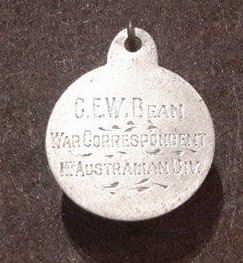
Identification disc C.W.E. BEAN
He travelled to Egypt with the first contingent of the Australian Imperial Force, as a civilian who was regarded as a captain for such purposes as precedence in the mess. He wrote a booklet, What to Know in Egypt … A Guide for Australasian Soldiers (Cairo, 1915). An early dispatch, explaining why 'a handful of rowdies' were being sent home, aroused resentment. A savage set of verses accused him of 'wowseristic whining' and declared that he could not be an Australian. Early in April he left Egypt with the main body of the A.I.F. which joined the Mediterranean Expeditionary Force.
Bean went ashore at Anzac Cove on Gallipoli about 10 a.m. on 25 April 1915, some five and a half hours after the first landing. Two weeks later he accompanied two Australian brigades in a costly and unsuccessful attack at Cape Helles. For the help he gave to wounded men under fire on the night of 8 May he was recommended for the Military Cross; as a civilian he was not eligible, but was mentioned in dispatches. His bravery became a legend, and erased whatever hostility remained from his dispatch about the first of the returned soldiers. Australians at home read a detailed account of the landing in the papers of 8 May. It was not by Bean, whose first dispatch was held up by the British authorities in Alexandria until 13 May, but by the English correspondent Ellis Ashmead-Bartlett. Both accounts were much reprinted. Bean's was the more precise, for he had seen more. The English reporter betrayed surprise that untrained colonials had done so well; Bean was seeing what he hoped confidently to see: the Australian soldiers, as he described them, were displaying qualities he had observed out in the country.
He was the only correspondent to stay on Gallipoli from April to December. On 6 August he was hit by a bullet in the right leg. Determined not to be taken off to a hospital ship, he hobbled to his dugout and lay there until 24 August, having the wound dressed each day, until he was well enough to get out and watch the fighting. At the evacuation he carried off writing and drawing by soldiers which he edited as The Anzac Book (London, 1916). Bean contributed photographs, drawings, and two pieces of verse: 'Abdul', in which the Turkish enemy is honoured for having 'played the gentleman', and 'Non nobis', an affirmation that although we cannot understand why the dead have died and we live, there must be some beneficent purpose which all the destruction of war is serving. In 1946 these verses, set to music by Dr A. E. Floyd, were included in the Australian supplement of the Church of England's The Book of Common Praise.
In 1916-18 Bean was in France to observe every engagement of the A.I.F. Some dispatches were published as Letters from France (London, 1917). The historian's task grew larger in his mind. At first he thought of one volume, but in France he conceived a grander work which would be literally a monument to the men of the A.I.F.—'the only memorial which could be worthy of them', he decided, 'was the bare and uncoloured story of their part in the war'.
Late in 1918 Bean took leave in the south of France and wrote In Your Hands, Australians (London, 1918), an Australian version of the world-wide hope that the survivors of war would perform peaceful deeds which justified the years of death. The last and longest chapter was about education. Early in 1919 he went back to Turkey on a journey described in a book eventually published as Gallipoli Mission (Canberra, 1948). He studied the field of battle as the Turks had seen it and reported to the Commonwealth government on how the Australian graves should be disposed and maintained. In May he returned to Australia, writing on the way home his recommendations for the official history and for a national war memorial which 'for all time' would 'hold the sacred memories of the A.I.F.' The government accepted his proposals. Late in 1919 the historian, his staff and their crates of records moved into the homestead of Tuggeranong near Canberra, to create The Official History of Australia in the War of 1914-1918.
In 1956 he and his wife moved from Linfield to Collaroy, to another house named Clifton. Early in 1964, aged 84, Bean was admitted to the Concord Repatriation General Hospital, and died there on 30 August 1968. He was cremated after a memorial service in St Andrew's Cathedral. He had not been a regular churchgoer, believing (he said in 1948) that 'the question whether God existed or not could make no difference to conduct'. The congregation sang his verses of 1915, 'Non nobis', and heard Angus McLachlan speak of the 'devotion, amounting almost to worship' that he won from friends.
An author at Gallipoli described him as 'Captain Carrot' because of his hair colour, a man 'with the face of a student … He was rather tall and rather thin, with a peaky face and glasses'. He had a light voice, and an accent close to standard English but retaining the Australian 'a'.
By K. S. Inglis. This article was published in Australian Dictionary of Biography, Volume 7, (MUP), 1979
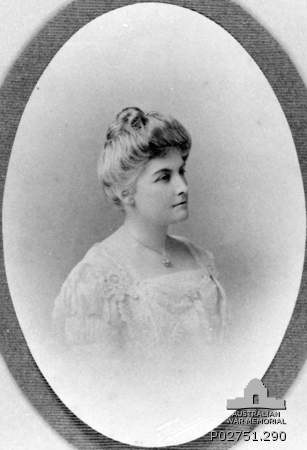

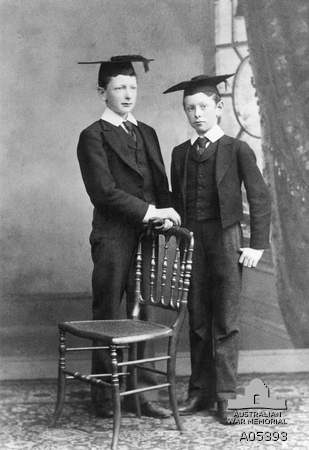
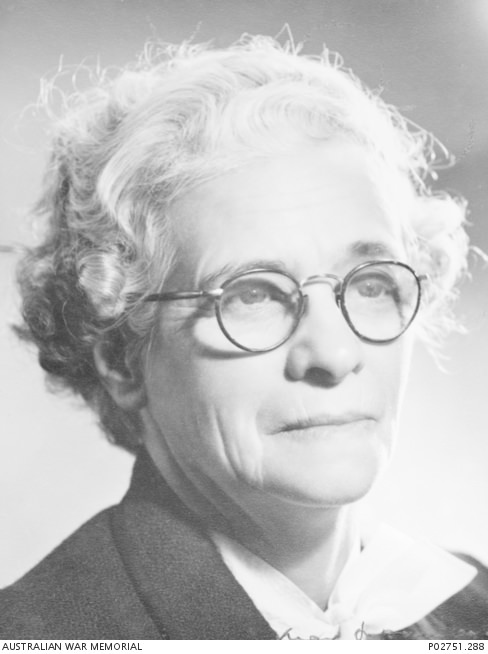
HISTORIAN C.E.W. BEAN DIES, 88
Dr Bean. SYDNEY, Friday. - Charles Edwin Woodrow Bean, teacher, journalist, author, lawyer and historian, died in Sydney today aged 88. He was an Oxford MA and BCL and a Doctor of Literature from Melbourne University. The ANU conferred on him an honorary doctorate of laws. For two years from 1911 Dr Bean was London representative of the Sydney Morning Herald and was a leader writer for the newspaper in Sydney in 1914. He was the Australian official war correspondent during World War I. The following tribute to Dr Bean was paid last night by Mr Gavin Long, general editor of the official history of Australia's part in World War II: "Charles Bean was the greatest historian of his times. His own six-volume history of the Australian Infantry in the 1914-18 War ranks beside the outstanding histories written any time and anywhere. And they have had a great influence on military history overseas, particularly in methods of research and intention specially in the the USA, in the last 25 years or so. "But his war history was only part of his contribution to the life of his times in Australia. "The books he wrote before World War I about the people of the outback are now recognised as classics. He was responsible for the conception and achievement of the Australian War Memorial. Later he achieved the formation of the Parks and Playgrounds Movement, and later still the establishment of the Commonwealth archives. "Against heavy inertia he managed to ensure that early preparations were made for a government-sponsored history of World War II, and he guided it wisely and firmly in its early stages".
Obituary* - Page 2.

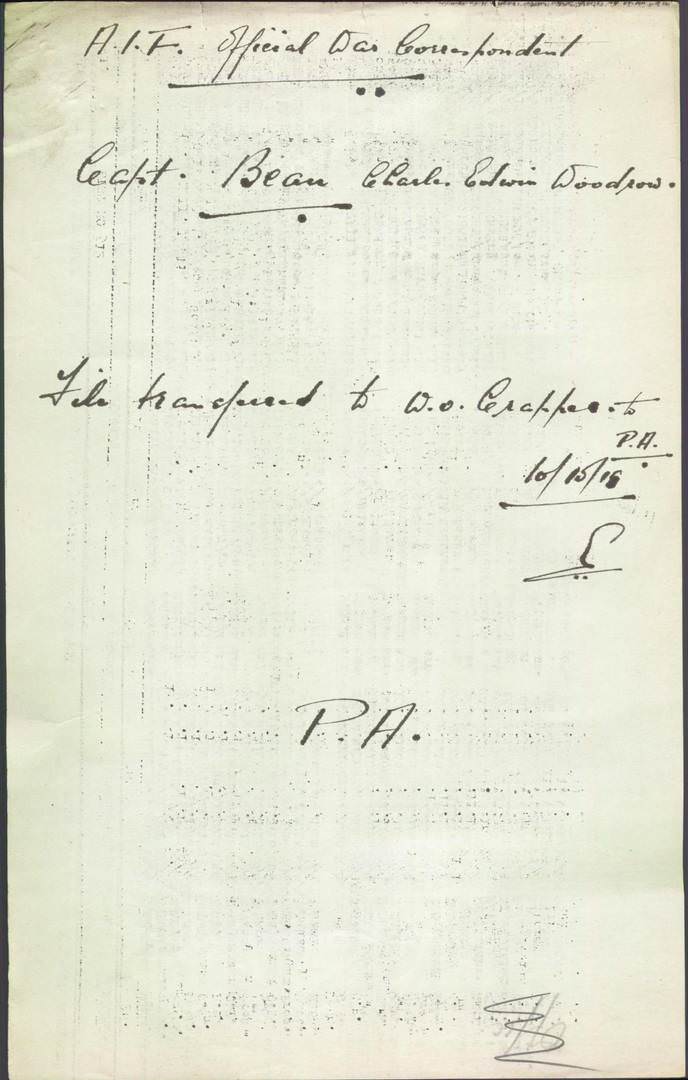
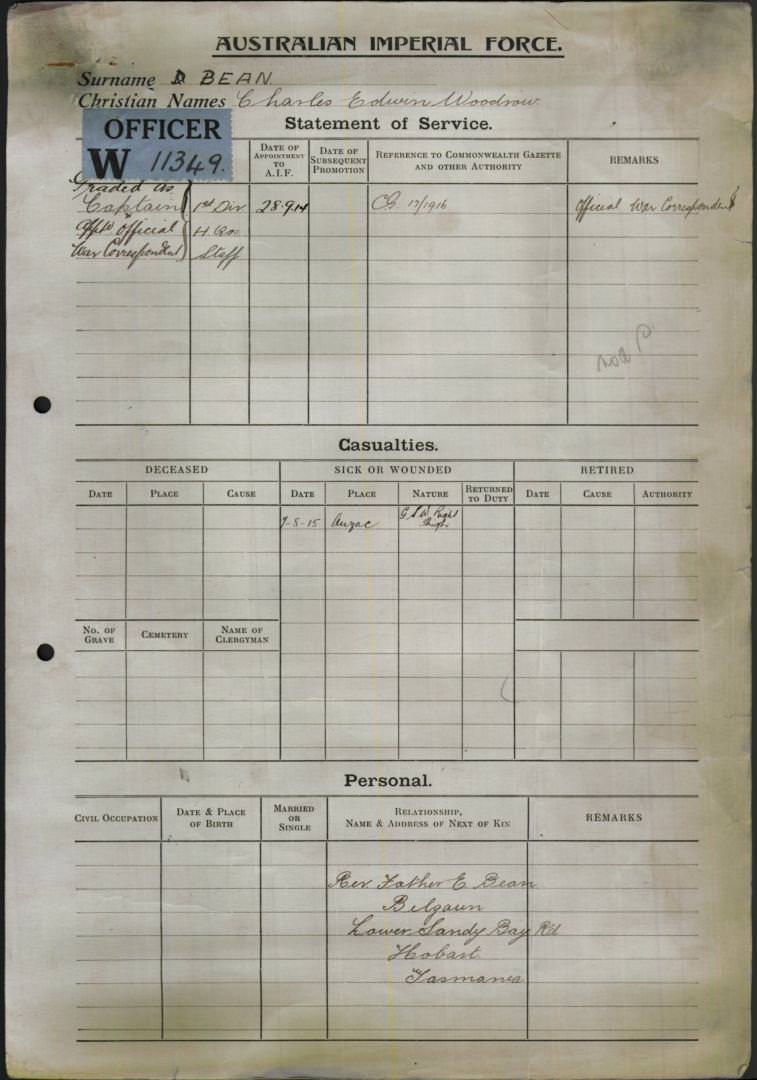
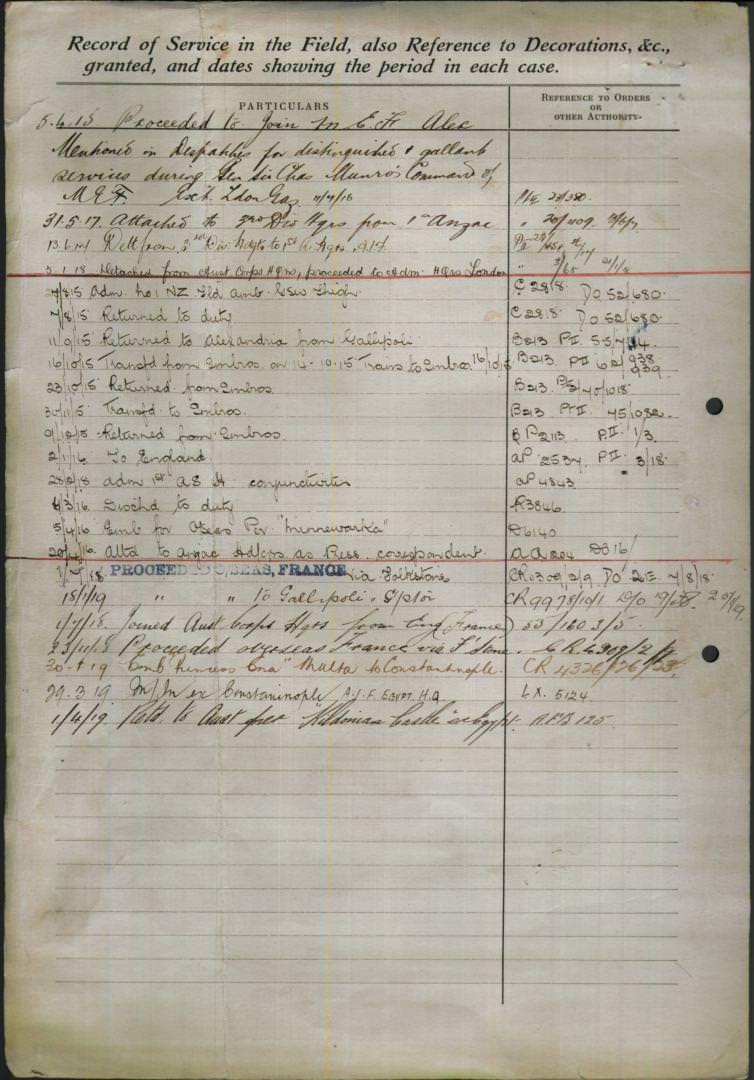

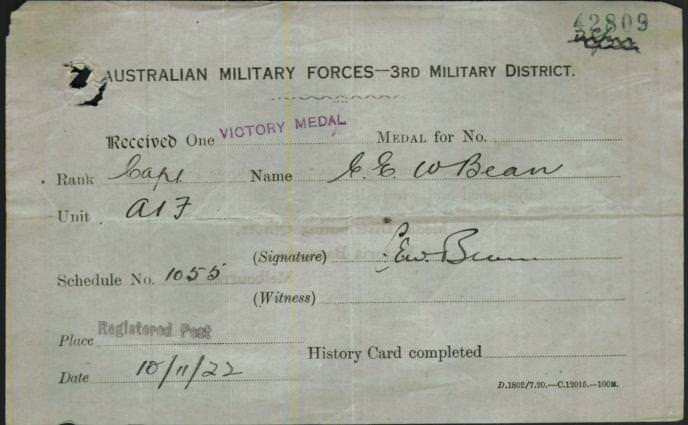
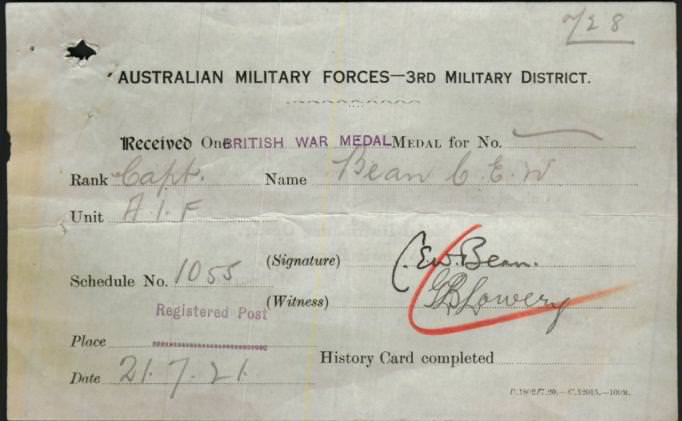
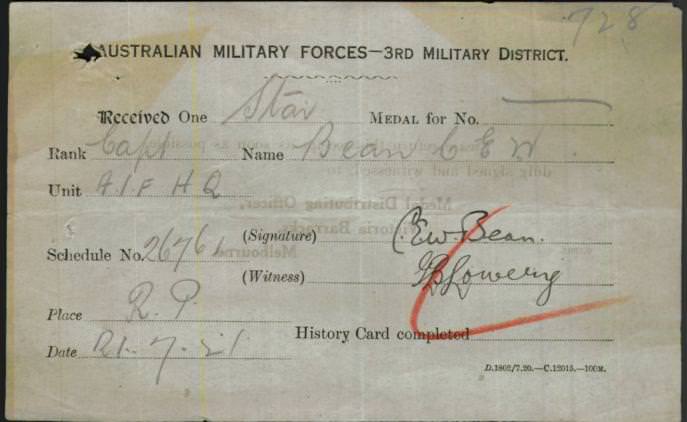
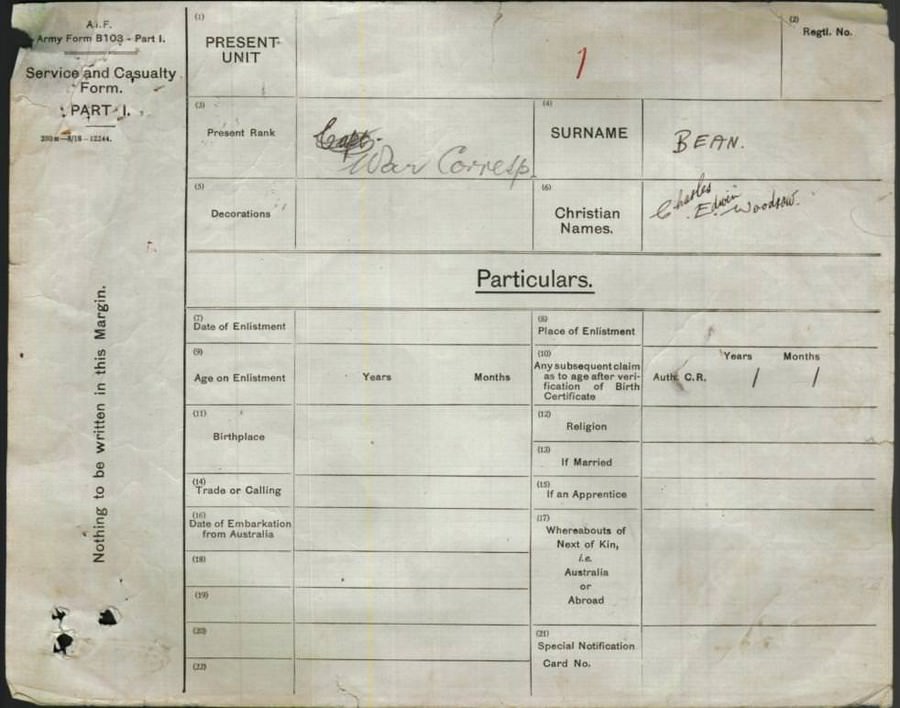
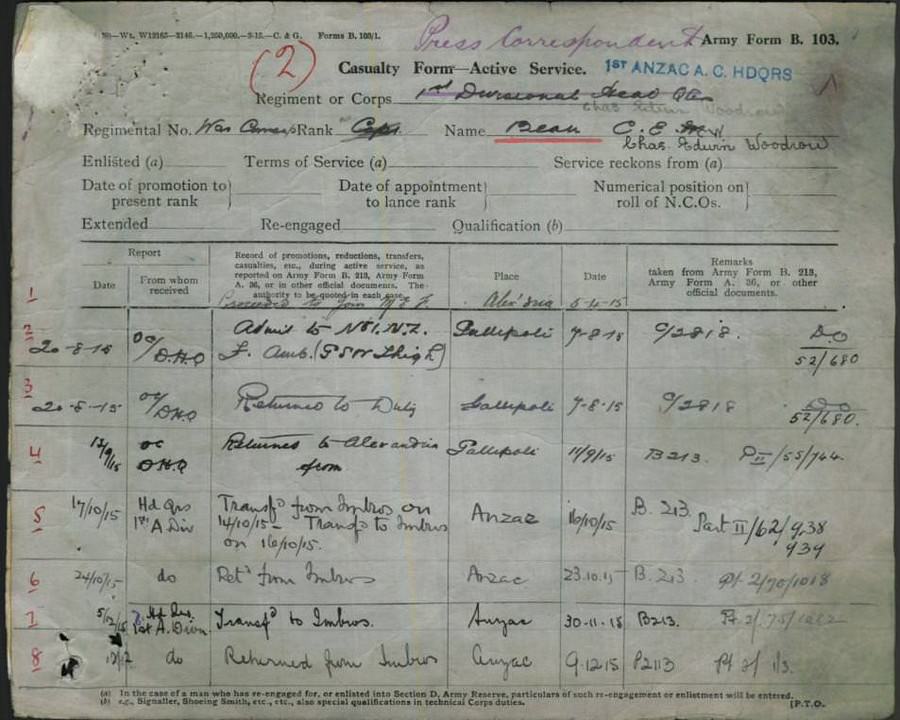

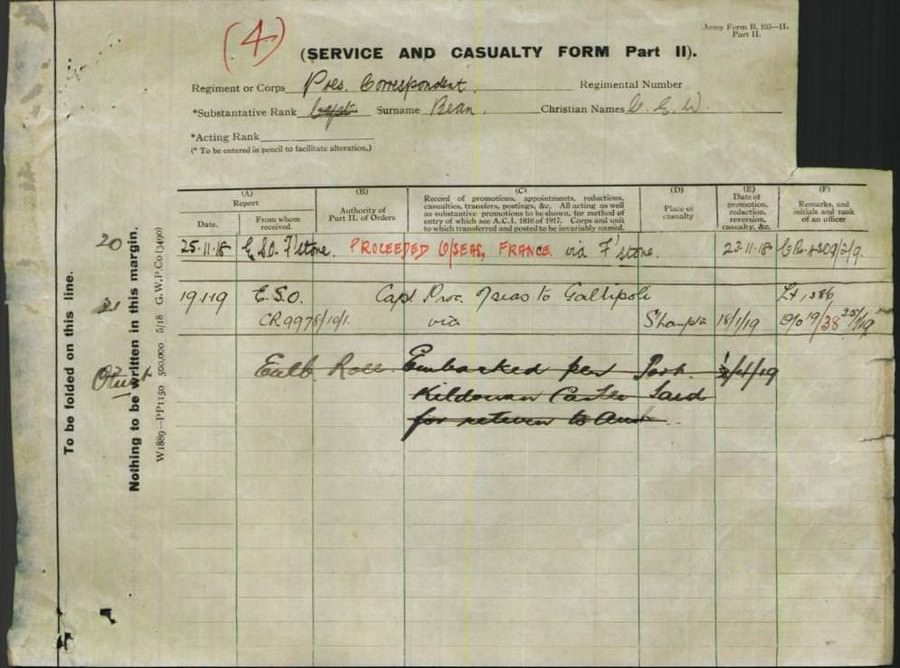
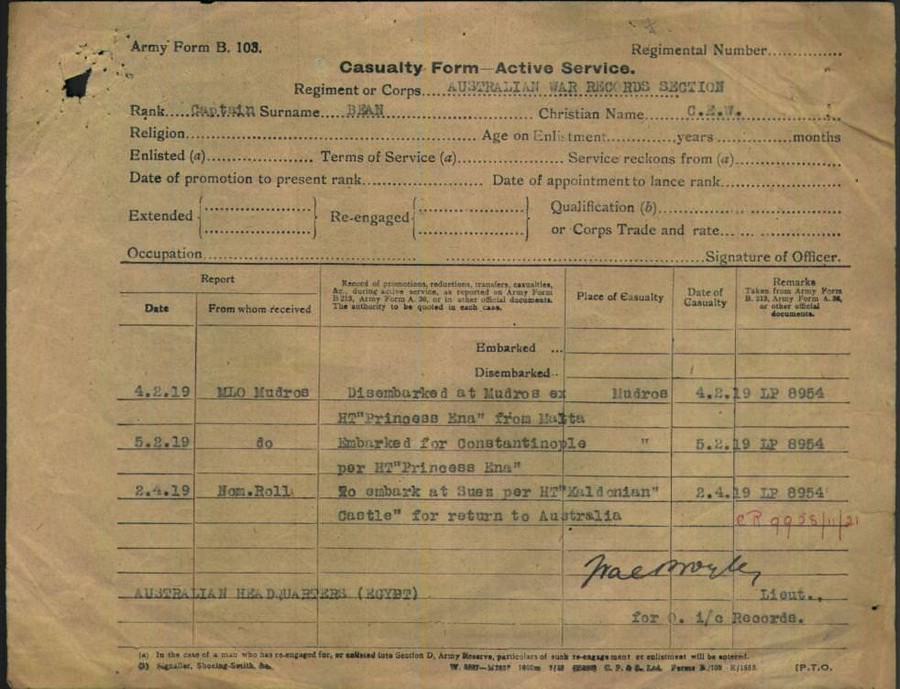
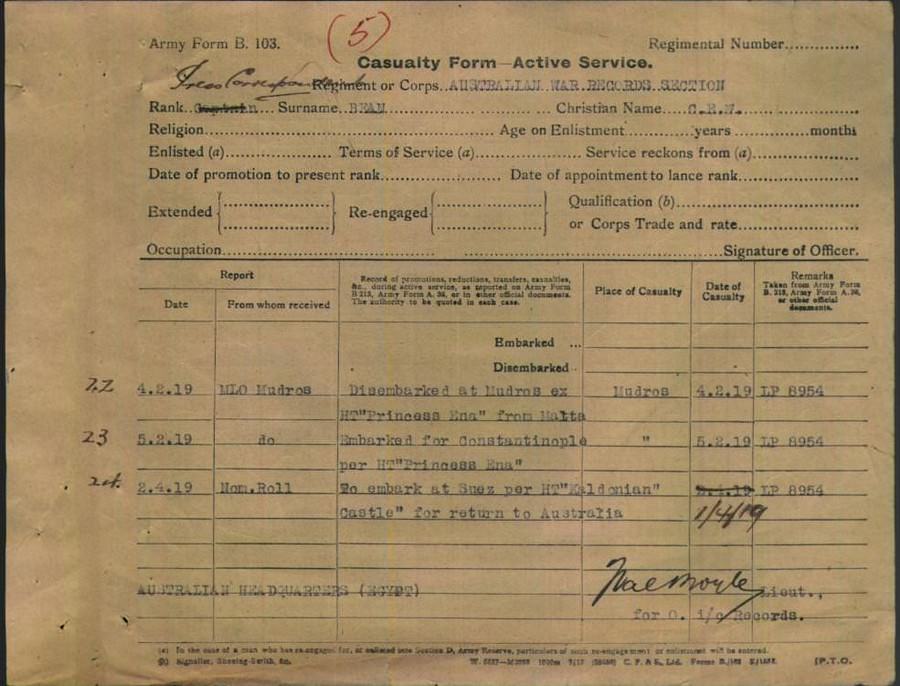
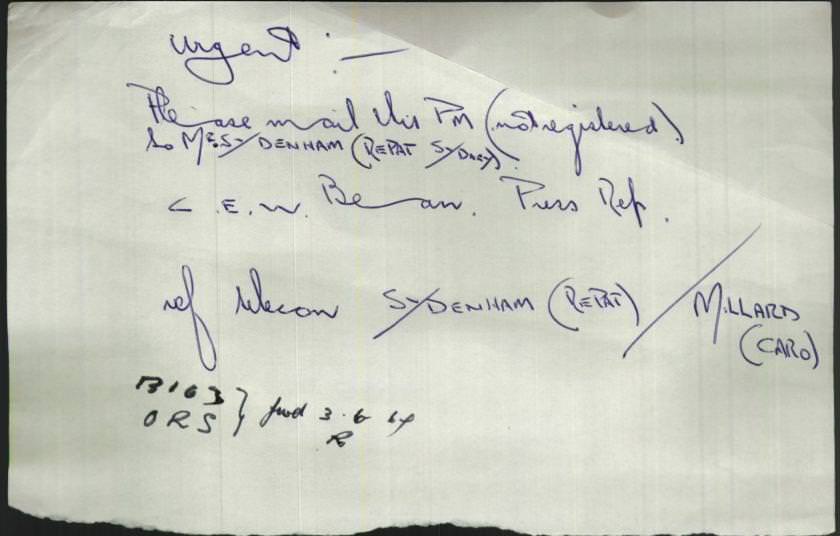
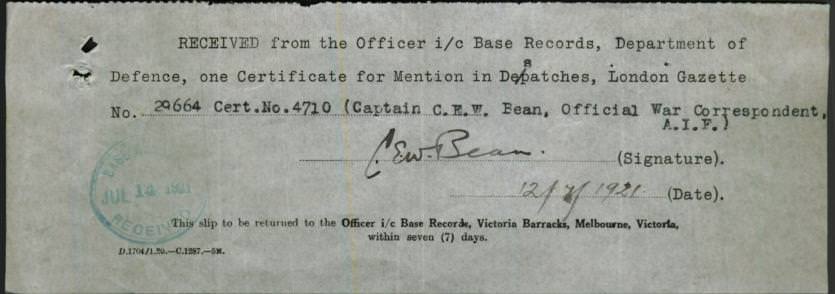
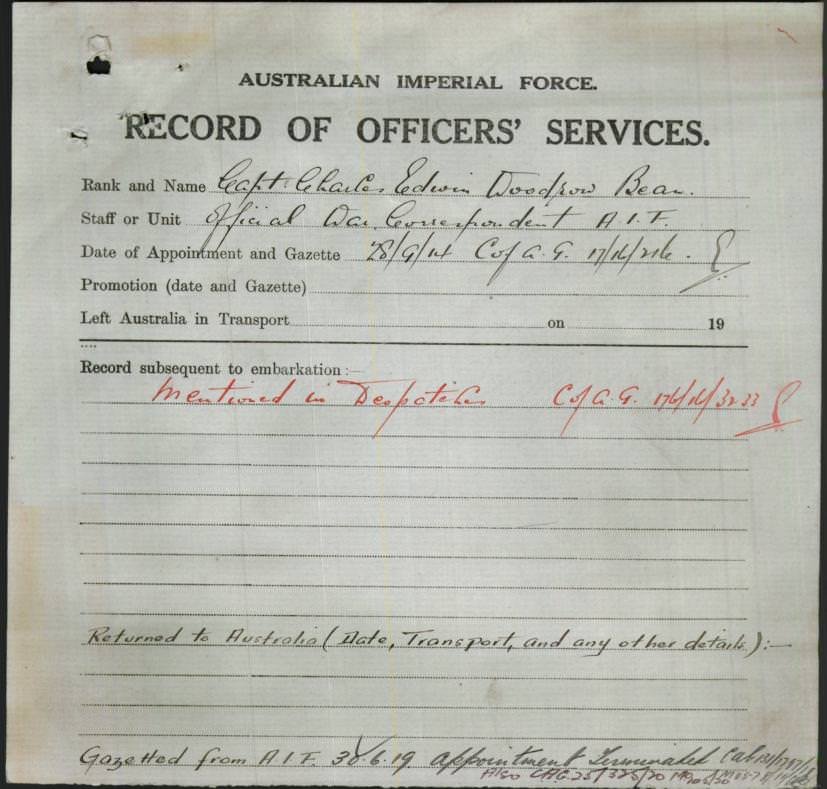
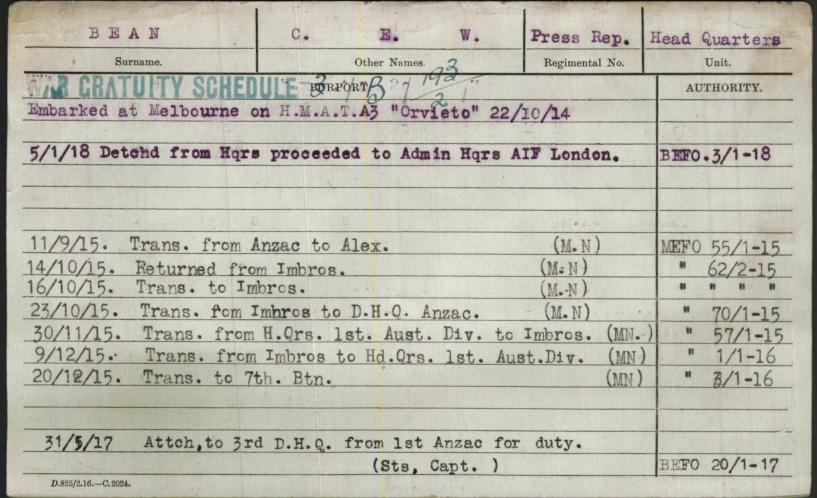
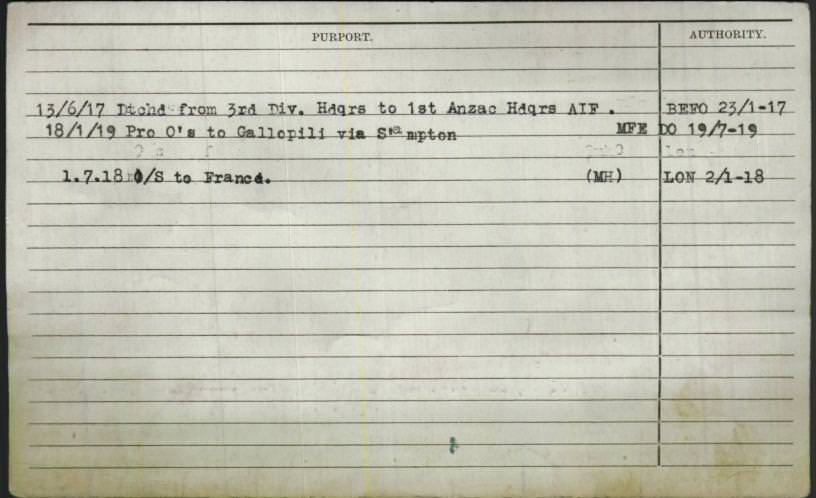
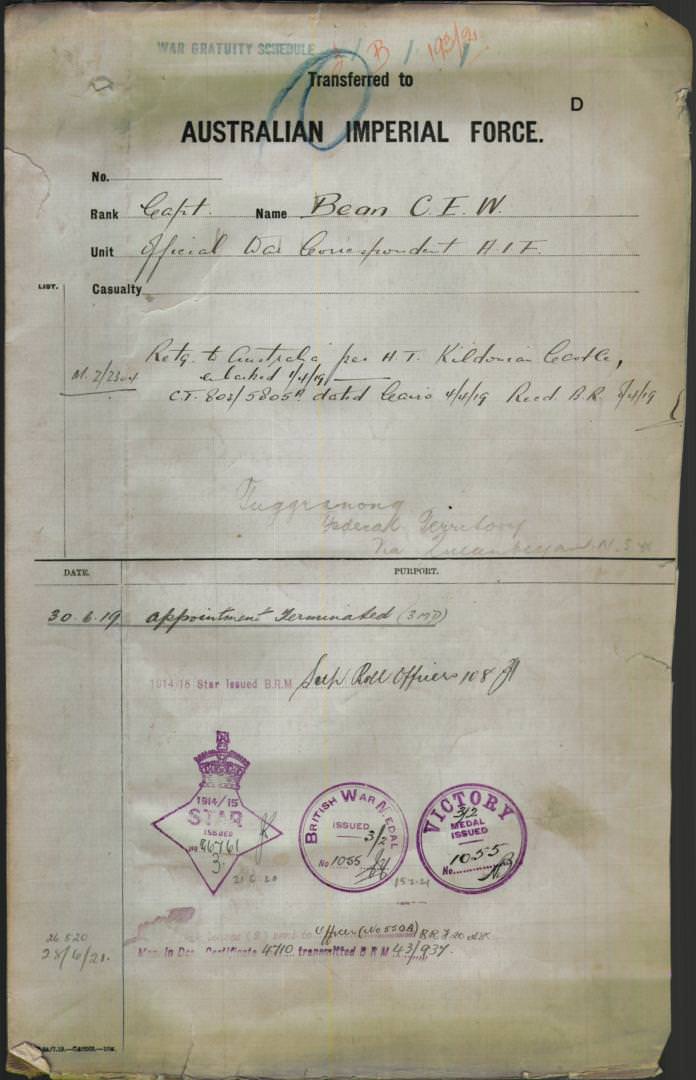
Under Construction: 01/10/2013-26/06/2021.